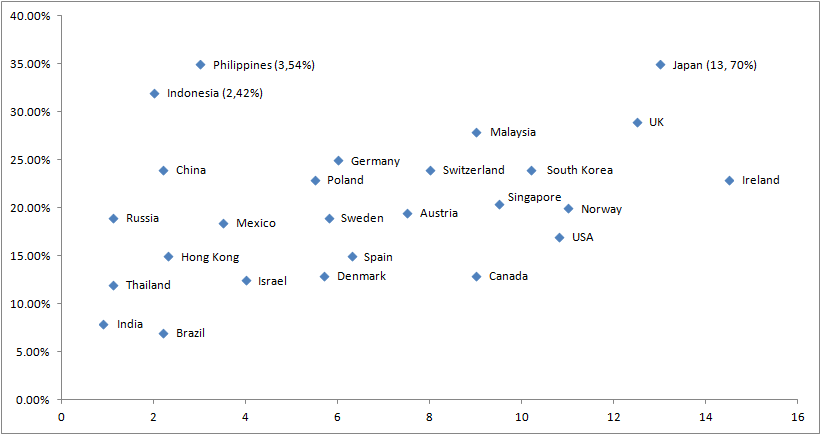1. It is expected that by 2010, revenue from data transfer as a percentage of total revenue will triple for India and double for Sweden. Assume that in 2010, the total revenue in India is twice that of Sweden and that the volume of data transfer is the same in both the countries. What is the percentage increase of ARDT in India if there is no change in ARDT in Sweden?
Show Similar Question And Answers
 It was found that the volume of data transfer in India is the same as that of Singapore. Then which of the following statements is true?
It was found that the volume of data transfer in India is the same as that of Singapore. Then which of the following statements is true? Powered By:Omega Web Solutions
Powered By:Omega Web Solutions